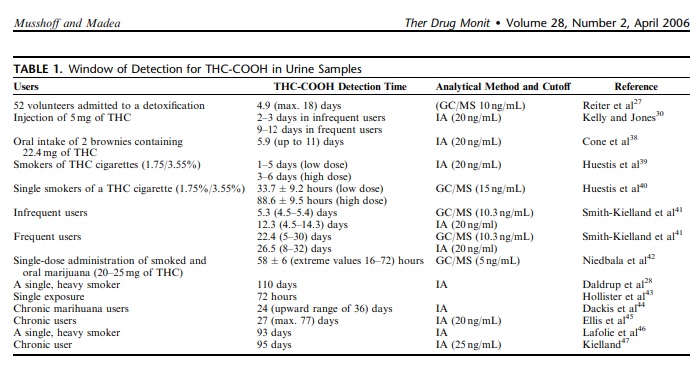Various reasons exist as to why someone would be subjected to a drug test for THC, and there are various types of tests to detect THC in someone’s system, including urine tests, blood tests (much rarer due to the invasive nature and cost of testing), saliva tests, sweat tests, hair follicle tests, and even emerging technology-based tests (of questionable value).
If you are being subjected to a drug screening for THC for any reason, it’s likely that you are wondering how long THC stays in a person’s system. Unfortunately, despite what you may read elsewhere, there is no one-size-fits-all answer. Several factors must be considered, including but not limited to: body fat content, potency of cannabis involved, and frequency of use.
The closest someone can get to a one-size-fits-all answer is offering up what scientific studies have determined is the longest duration that THC can be detected in a person’s system. According to a peer-reviewed study from 2006, cannabis can be detected in a ‘heavy smoker’ for as long as 110 days via urine samples.
However, that is in the most extreme case. The same previously cited study also provides other ‘windows of detection’ for other consumption methods and scenarios:

According to a separate study from 2016, “Urine tests provide a qualitative measure of recent cannabis use, and are able to detect moderate and chronic heavy use for up to 4 and 24 days later, respectively 3, 4, 5. In contrast the detection window for low level or infrequent cannabis use in urine is comparatively short 6.”
The same study stated the following regarding hair follicle testing: “Cannabinoids are incorporated into the hair shaft from the surrounding blood capillaries, as well as from sebum and sweat that surround the hair shaft 7, 8. Therefore, tests based on hair samples may provide a longer detection window of up to several months and may also measure quantity of cannabis use. As hair grows at a rate of approximately 1 cm per month 9, there is potential for the segmentation of hair samples to provide a measure of when drug use occurred.”
A study from 2004 examined saliva and sweat-based drug tests. Both seem to be growing in popularity amongst employers to try to detect more recent use. The 2004 study stated the following: “Urine is the most widely used specimen in the detection of drugs. Urinalysis offers an intermediate window of detection (1-3 days). Hair analysis offers the largest window of detection (7-100+ days). Saliva analysis may be useful in determining very recent drug use (1-36 hours). The analysis of sweat may be useful for continuous monitoring of drug use (1-14 days).”

